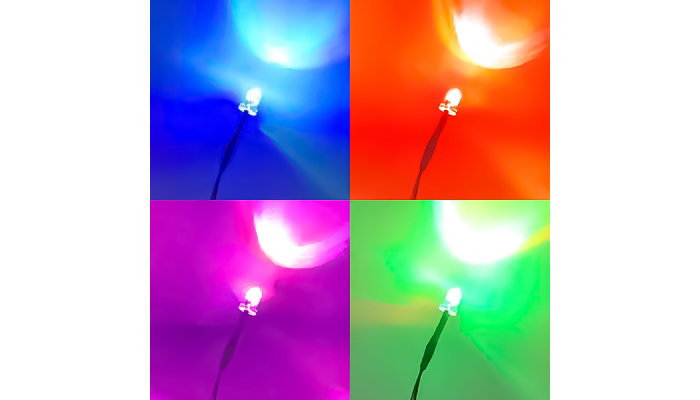
Using LED art lights in your gallery brings several practical benefits. First, their long lifespan—over 25,000 hours—means you won’t be changing bulbs frequently. This not only cuts down maintenance costs but also reduces the risk of damaging artwork during replacements. LEDs are also great for preserving artworks since they emit little infrared and no UV radiation, allowing you to present pieces without needing extra filters. Energy efficiency is another big plus; switching to LEDs can lead to significant savings on energy bills, with case studies showing quick returns on investment. Finally, their flexible design options enable creative lighting solutions while improving the visitor experience through superior color rendering and reduced glare.
1. Long Lifespan of LED Art Lights
LED art light stand out for their remarkable longevity, with a lifespan of over 25,000 hours. This far exceeds traditional incandescent bulbs, which last around 1,000 hours, and fluorescent lights, which last between 6,000 to 12,000 hours. The extended lifespan of LEDs means galleries can significantly reduce the frequency of bulb replacements, leading to lower maintenance costs and less labor involved. This is not just about savings; fewer changes also minimize the risk of damaging delicate artworks during maintenance. Moreover, LEDs maintain consistent brightness throughout their life, ensuring that exhibits are always well-lit and inviting for visitors. Many manufacturers back their LED products with warranties, adding an extra layer of assurance for galleries. Additionally, using long-lasting LEDs helps reduce waste, contributing to more sustainable practices in the arts. As LED technology continues to advance, the promise of even longer-lasting solutions is on the horizon, allowing galleries to enjoy uninterrupted lighting without the hassles of frequent changes. This durability makes LEDs ideal for various gallery environments, including those with high foot traffic, and aligns seamlessly with a gallery’s commitment to quality and the preservation of art.

2. Better Preservation of Artworks
Using LED art lights significantly enhances the preservation of artworks in galleries. Unlike traditional lighting, LEDs emit minimal infrared radiation and no ultraviolet (UV) radiation, which can be harmful to sensitive materials like pigments and fabrics. This reduction in UV exposure helps prevent fading and degradation, ensuring that artworks maintain their original vibrancy over time. Additionally, LEDs generate less heat compared to halogen or incandescent lights, creating a more stable environment for delicate pieces. This stability allows galleries to display valuable artworks without the need for excessive protective measures, making them more visible and accessible to visitors.
Specialized LED products designed for preservation are now available, focusing on both optimal lighting and the safety of artworks. For instance, galleries can showcase fragile pieces such as watercolors or textiles with confidence, knowing that the lighting will not compromise their condition. The ability to tailor LED lighting to specific artworks means that each piece can be displayed in a way that enhances visibility while ensuring its safety.
As a result, galleries can extend the display time for sensitive works without fear of damage, allowing for more diverse exhibitions. This capability not only enriches the visitor experience but also aligns with contemporary preservation standards that prioritize the care of art. Overall, the integration of LED technology in galleries represents a commitment to showcasing art responsibly while maintaining its integrity.
3. Energy Efficiency Benefits
LEDs are designed to use significantly less energy compared to traditional lighting options, making them an ideal choice for art galleries. By switching to LED lighting, galleries have reported energy savings of up to 89%, which translates into substantial cost savings on energy bills. This efficiency stems from the fact that LEDs convert a higher percentage of energy into light, unlike incandescent bulbs that waste much energy as heat. As a result, galleries can lower their operational costs, allowing them to allocate funds to other important areas like exhibits or community programs.
Moreover, many utility companies offer rebates and incentives for galleries that adopt energy-efficient LED lighting, further enhancing the financial appeal. Although the initial investment for LED lights may be higher, the long-term savings in energy costs and reduced maintenance typically outweigh these upfront costs. As technology continues to evolve, even more energy-efficient options are becoming available, making LEDs not just a smart choice for today, but for the future of gallery lighting.
4. Superior Color Rendering
Modern LED lights have revolutionized how we showcase art, particularly through their impressive Color Rendering Index (CRI) ratings, which often exceed 90. This means that colors in artworks can be displayed with remarkable accuracy, allowing viewers to see them just as the artist intended. For example, rich reds and deep blues, which can be challenging to render accurately, are now brought to life with clarity and vibrancy. The ability to present true colors not only enhances visitor appreciation but also fosters a deeper connection with the art itself. Galleries can choose specific LED products tailored for different types of art, ensuring that every piece shines in its best light. This commitment to quality helps maintain a gallery’s reputation for excellence and encourages visitor engagement, making the experience more enjoyable. Additionally, the consistent color temperature of LEDs creates a cohesive atmosphere throughout the gallery, allowing artworks to complement each other rather than compete for attention. Specialized LED fixtures can even be designed to highlight particular colors or features, further elevating the viewing experience.
5. Dimming Capabilities for Flexibility
Many LED fixtures now offer dimming options, giving galleries the ability to adjust light levels as needed. This feature can significantly enhance how different types of art are presented, from vibrant, colorful pieces to more subtle, nuanced works. By allowing for lower light exposure, dimming capabilities help protect sensitive artworks, ensuring their integrity over time. Furthermore, this flexibility opens up new possibilities for creating unique and engaging experiences for visitors. For special events, galleries can easily adapt the lighting to create memorable atmospheres. This not only simplifies the lighting setup—by eliminating the need for extra scrims or filters—but also reduces costs. Dimmable LEDs can help establish different moods, enriching the overall visitor experience. Advanced control systems enable easy programming of lighting scenes tailored to various exhibitions, supporting innovative design and presentation. This means galleries can showcase artworks in ways that more closely reflect the artists’ intentions, creating a deeper connection between the art and its audience.
6. Lower Heat Emission
LEDs produce much less heat compared to traditional lighting options, such as incandescent bulbs. This reduced heat emission is vital for protecting sensitive artworks, as it lowers the risk of heat damage, which can deteriorate the quality and condition of pieces over time. Galleries can confidently place LED lights closer to artworks, enhancing visibility without the worry of overheating. This is especially beneficial in enclosed display cases, where maintaining a stable temperature is crucial for preservation.
Additionally, less heat in the gallery creates a more comfortable environment for both visitors and staff. The cooler atmosphere also lessens the demand on air conditioning systems, leading to energy savings and lower costs. Furthermore, heat reduction helps maintain stable humidity levels, essential for preserving various materials found in artworks.
7. Reduced Glare for Enhanced Viewing
Modern LED art lights are designed with reduced glare in mind, which significantly enhances the viewing experience for gallery visitors. This innovative approach allows people to appreciate the intricate details of artworks without distractions. Incorporating glare-reducing technologies into the design of fixtures helps create optimal lighting conditions, especially important for artworks with shiny or reflective surfaces. By managing glare effectively, galleries can enhance their spaces, inviting visitors to engage more deeply with the art. A well-lit gallery not only encourages longer visits but also makes exhibitions more accessible for individuals with visual impairments. Additionally, carefully designed lighting can guide the viewer’s focus to the key elements of each piece, fostering a more immersive experience. Overall, the combination of reduced glare and high-quality lighting cultivates an inviting atmosphere, enriching the appreciation of art.
8. Positive Environmental Impact
LED art lights are a smart choice for galleries looking to make a positive environmental impact. Unlike traditional lighting options, LEDs contain no hazardous materials like mercury, making them safer for both art and the planet. By switching to LED lighting, galleries can significantly reduce their energy consumption, which in turn lowers their overall carbon footprints. This shift aligns perfectly with global efforts to combat climate change, supporting a more sustainable future for the art community.
Many galleries are now adopting sustainable practices, and using energy-efficient lighting is a key part of this initiative. The lower energy demand from LEDs reduces reliance on fossil fuels, further contributing to a greener environment. Additionally, LEDs can be recycled or disposed of more easily, which helps reduce waste in landfills.
9. Cost-Effectiveness Over Time
Investing in LED lighting may require a larger upfront cost, but the long-term benefits quickly become apparent. Galleries experience significant savings on energy bills, as LEDs use far less electricity than traditional lighting options. This translates into lower monthly utility expenses, freeing up funds for other important gallery functions. Additionally, the long lifespan of LED fixtures—often exceeding 25,000 hours—means that galleries spend less on replacements and maintenance, reducing labor costs associated with frequent bulb changes. Many institutions have found that the savings from energy-efficient lighting can even cover the costs of new exhibitions or community outreach programs. As LED technology continues to evolve, galleries can look forward to even more cost-effective solutions in the future. Furthermore, by switching to LEDs, galleries contribute to sustainability efforts, enhancing their overall operational efficiency. Some galleries may also qualify for rebates, making the transition to LED lighting even more financially viable. Ultimately, making the right lighting choices can significantly improve the financial health of galleries, allowing them to focus on their mission of showcasing art.
10. Flexibility in Lighting Design
LED fixtures come in various sizes and shapes, providing endless creative possibilities for lighting design in galleries. Their versatility allows for unique installations that enhance the presentation of artworks, making each exhibit an engaging experience. Galleries can utilize track lighting, spotlights, and wall washers to achieve the desired effects, directing attention to specific pieces and creating a dynamic atmosphere. Customizable lighting solutions enable galleries to tailor designs to specific exhibitions, ensuring that each display reflects the theme and intention of the artwork.
The ability to combine different LED types can create truly captivating displays, supporting innovative exhibition designs that attract more visitors. Moreover, the compact size of LED fixtures allows for unobtrusive installations, maintaining the focus on the art itself rather than the lighting. Collaborating with lighting designers can lead to exciting and memorable gallery experiences, as they can craft tailored solutions that highlight each piece beautifully. Additionally, the creative use of LED lighting can enhance storytelling in exhibitions, deepening visitor engagement and making the art more relatable.